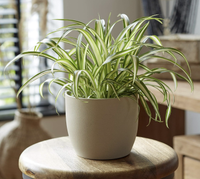Easy-going houseplants that give more than they take
You don't need to be green-fingered to keep these houseplants alive - they're among the easiest to look after and hardest to kill.


Never mind a green thumb - do your friends and family joke that you have the "thumb of death" when it comes to home-based horticulture? If so, this list is for you...
Whether you’re super busy, a bit forgetful, or just starting out on your plant journey, there’s a perfect low-maintenance plant waiting to thrive under your care. Maybe your past plant companions just weren’t the right fit - but don’t give up. Dozens of hardy houseplants can flourish with minimal attention, tolerating low light (because not everyone has floor-to-ceiling windows) and infrequent watering. You just need to find the right one for you!
And if you need more motivation, know that houseplants don’t just add a splash of greenery to your home - they also boost creativity, ease mental health worries, and purify indoor air. What’s not to love? Read on to meet your new plant partners and find out exactly what they need to help you create a flourishing indoor oasis!
Easy-going houseplants that give more than they take
Spider Plant

With its fountain-like shape of multi-coloured leaves, the air-purifying Spider Plant (Chlorophytum comosum) is not only very attractive but thanks to it being super resilient, it's a top choice for beginners, as it bounces back quickly from drought and tolerates most lighting conditions (although will pale in harsh sunlight).
If you want your plant to increase in size, simply repot it into a bigger tub in the spring, and remove any baby plants known as “spiderettes” which can be replanted on their own.
Variegatum Spider Plant Indoor Chlorophytum Comosum Houseplant (12cm Pot), £14.98 | Amazon
The perfect addition for all types of living spaces, these low-maintenance plants are the perfect addition to any home.
Snake plant

A fantastic air purifier, the Snake plant (Sansevieria trifasciata), also known as "Mother-in-law's tongue" is as low-maintenance as they come. With its vibrant, sword-like leaves, Not only is it drought-tolerant and relatively hardy, it'll survive in low light (but thrive in bright). In fact you can pretty much neglect the Snake plant without it making a fuss. It'll cope with dry air and draughts but try to keep it somewhere that stays above 10°C. Look to its leaves for signs of unhappiness, namely if they are shrivelled you've probably underwatered it, and if they are falling out to the sides, or worse, are yellow, then you've overwatered.
ZZ Plant
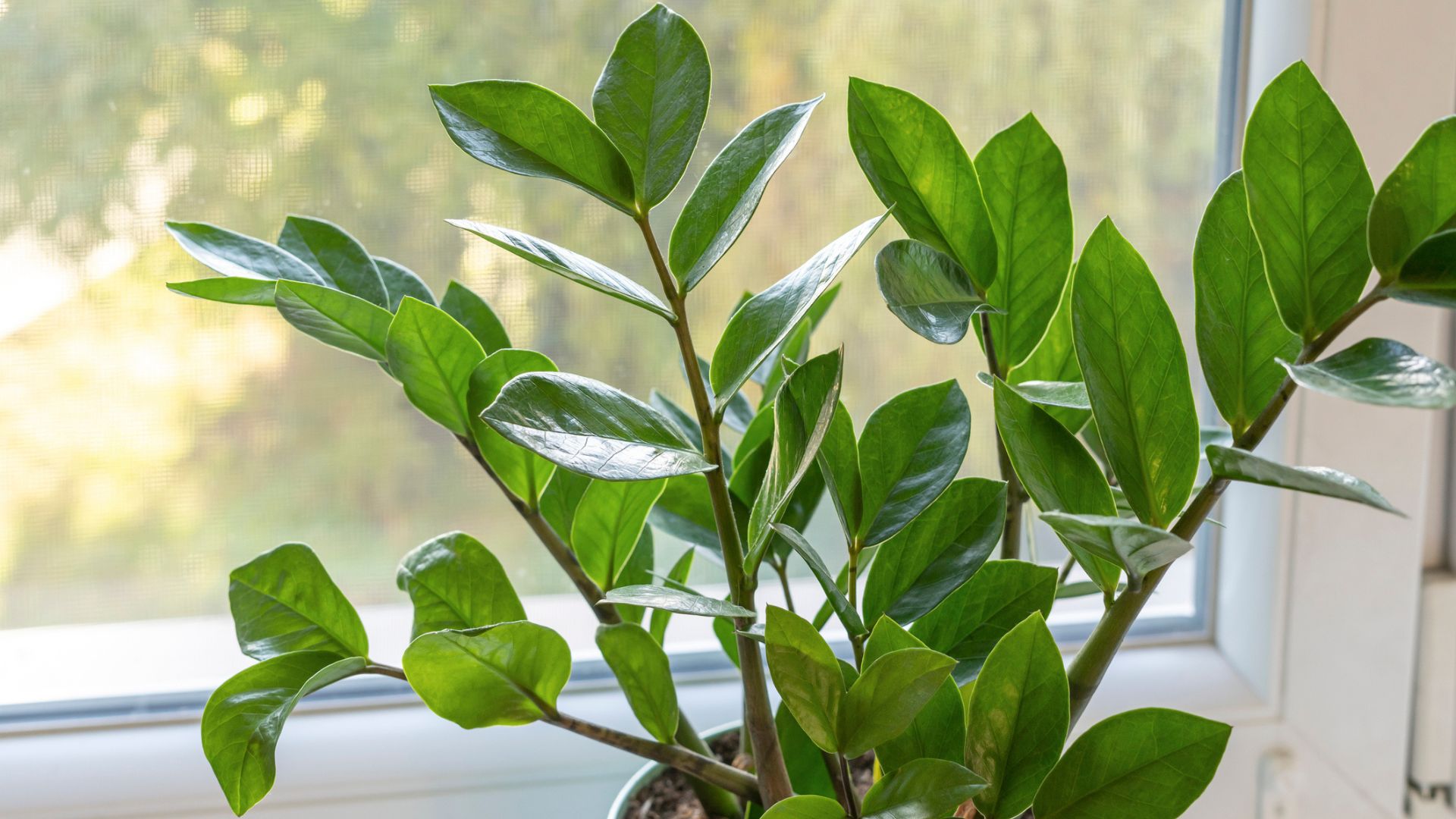
ZZ Plant (Zamioculcas zamiifolia) is a very forgiving houseplant, in fact it's almost indestructible; surviving low light and long periods of drought. In fact the worst thing you can do for your ZZ Plant is to care too much as it thrives on neglect (but it will need the occasional watering). A sign to look out for is yellow leaves, which indicates it's had too much to drink. If this is the case, tip away any remaining water from the saucer or decorative pot and allow the compost to dry out. If any of the roots look mushy, tip away the old soil and repot with fresh.
Sign up for the woman&home newsletter
Sign up to our free daily email for the latest royal and entertainment news, interesting opinion, expert advice on styling and beauty trends, and no-nonsense guides to the health and wellness questions you want answered.
Pothos
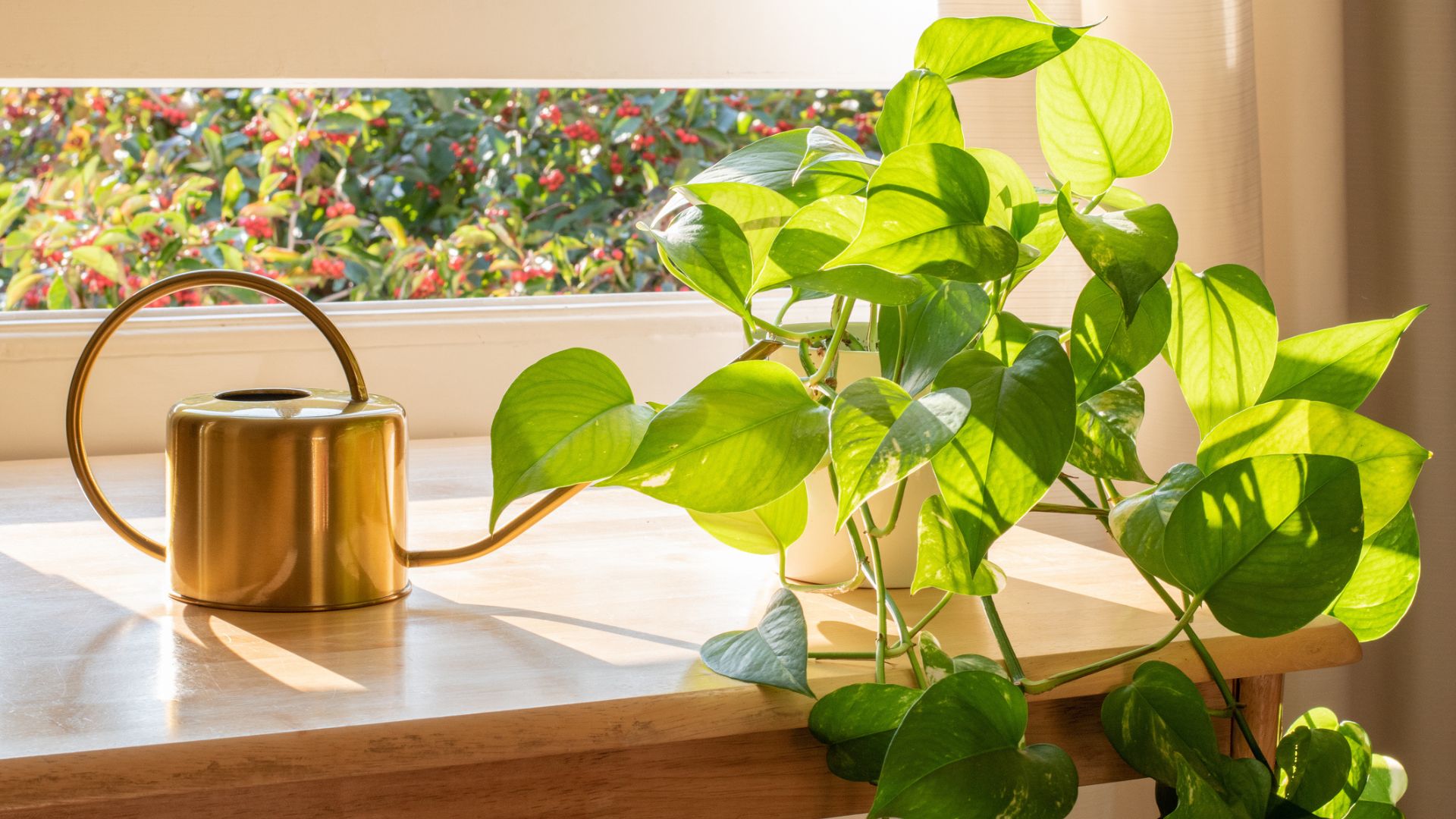
Pothos (Epipremnum aureum), known for its vivacious trailing vines, is about as forgiving a plant as they come. Also known as "Devil's Ivy", the Pothos is easy-going and resilient, tolerating less-than-ideal conditions, be it low light or the occasional missed watering, and recovers well from neglect. If the trailing look isn't for you, you can encourage it to grow up and around a moss pole for a fetching aesthetic. What's more, the Pothos is one of the top air-purifying plants you can buy. Particularly resilient varieties include: Golden Pothos, Marble Queen, and Neon.
Philodendron
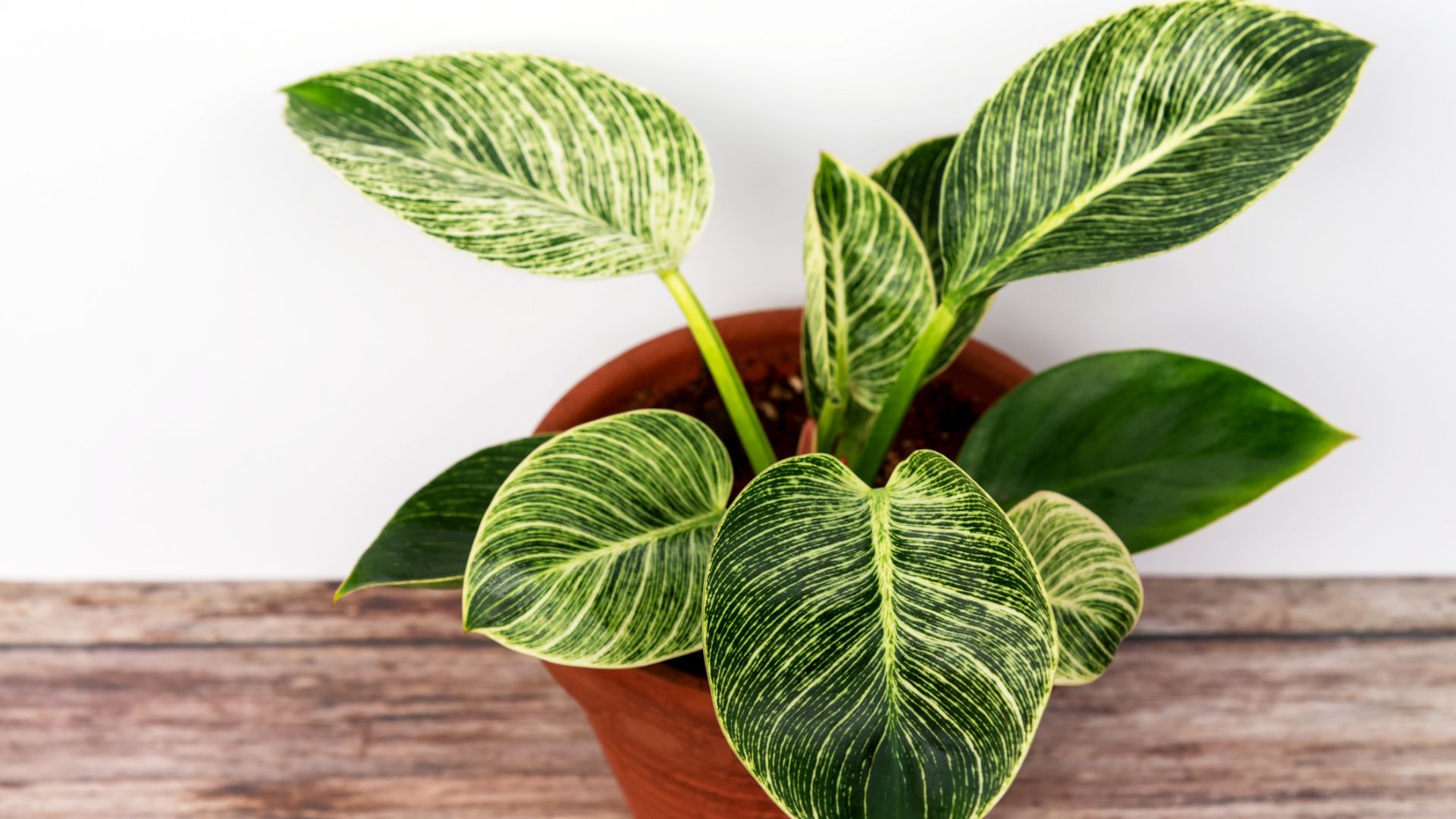
Known for their lush, tropical look Philodendrons (Philodendron spp.) come in a variety of shapes and sizes, often with attractive leaf shapes, be they heart, elongated or lobed. Whatever cultivar you opt for, Philodendrons are incredibly adaptable and forgiving, making a great choice for a beginner, plus they'll happily purify the air in your home. They can cope with low light and low humidity and have minimal watering needs.
Three particularly resilient options include Philodendron Birkin, Heartless Philodendron, and Philodendron Selloum.
Cast Iron Plant

Living up to its name, the Cast Iron Plant (Aspidistra elatior) is one tough customer, boasting the constitution of an ox. With its long, dark green shard-like leaves, this plant prefers warm temperatures and bright, indirect light. Although it can tolerate under-watering, be careful not to overdo it as it hates having wet feet and soggy roots. It'll thank you for a light misting once a week and a wipe of its leaves once in a while, but other than that it's generally a happy chappy.
Aloe Vera

Not only will Aloe Vera (Aloe barbadensis miller) clean the air around you, it can soothe sunburn and minor scolds thanks to the naturally healing gel contained within its spiky leaves. Simply cut off an appropriate-size section from one of the leaves, slice it open and scoop out and apply the cool sap. And what does the Aloe Vera want in return for its first-aid giving foliage? Practically nothing. Just a nice bright spot on the window sill and some dry, well-drained compost. Water only when the top inch of soil has dried out.
Chinese Evergreen

The Chinese Evergreen's (Aglaonema spp.) adaptability makes this houseplant so easy to care for. Well known for its tolerance of low light and little water, its preference for average household conditions also helps to make it a firm favourite with beginners and busy plant owners alike. Three noteworthy cultivars include Aglaonema 'Maria', with its dark and light green markings, Aglaonema 'Silver Bay' featuring bright silver-green leaves with darker edges, and Aglaonema 'Red Siam' famed for its vibrant pink and red-tinted leaves, perfect for adding a splash of colour to your home.
Jade Plant

Said to bring good fortune, the Jade Plant (Crassula ovata) or "Money Plant" as it's also known, is an easygoing succulent that takes occasional neglect in its stride. Featuring thick, fleshy, oval-shaped glossy green leaves that are sometimes tinged red, when given the right conditions the Jade Plant can develop a thick, tree-like trunk over time, creating a cute, miniature tree-like appearance.
Low-maintenance, and long-lasting the Jade Plant thrives in bright, indirect light, and can even withstand the harsh sun.
Rubber Plant

The Rubber Plant (Ficus elastica), known for its thick, glossy leaves in a variety of attractive shades from deep green to bright burgundy, is a very low-maintenance houseplant, and one that will happily purify the air in your home. It prefers bright, indirect light but won't grumble if put somewhere where it's a little darker, and it's best to only water it when the top inch of soil is dry. As well as being drought tolerant, it's also considered to be fairly pest-resistant.
Lucky Bamboo

Lucky Bamboo (Dracaena sanderiana) is so easy going it's happy growing in just water (with a few small pebbles) or soil and is prized for its twisty and pliable stems that can shaped and trained into various forms, such as spirals, braids and intricate patterns. Although masquerading under the name, Lucky Bamboo isn't actually bamboo, but it does symbolise positive energy in Feng Shui so we'll forgive it for the identity theft.
Thriving in anything from low to bright indirect light, and only needing fortnightly watering or water changes, this plant is super chill. Its only kryptonite is the chemicals contained in tap water, so use distilled, filtered or rainwater instead.
Peace Lily

One of the reasons why the air-purifying Peace Lily (Spathiphyllum spp.) is so easy to care for and (almost) impossible to kill, is it will helpfully let you know when there's a problem. For example, its dark green leaves will visibly wilt when it's thirsty. Other than that just pop it in a moderately bright spot and mist its leaves now and then, and it will be as happy as Larry. What's more, if you get all the conditions spot on, you'll be rewarded with white "flowers", which are actually leaf bracts called spathes that surround a nobbly spadix. It also absorbs moisture from the air so is a great choice if you have dehumidifiers dotted around your house.
As well as Peace Lily, this plant goes by the monikers of "Sail Plant", "White Sails" and "Spathe Flower".
Hoya

Thriving on neglect the Hoya's (Hoya spp.) thick, waxy, succulent-like leaves are perfect for storing water, meaning it can handle long periods of drought, causing you little to no bother, as long as you place them in bright, indirect light. The fetching, heart-shaped Hoya known as Hoya Kerri, or the "Sweetheart Plant" as it's become known, can tolerate some direct sun, plus it's considered to be slow growing, which makes it ideal if space is an issue.
Crown of Thorns

Grown indoors or out, the hardy, perennial shrub Crown of Thorns (Euphorbia milii) is super resilient, requiring minimal water, and when all conditions are favourable, the sun-loving succulent produces a bevy of small flowers in a variety of colours, including red, pink, white, yellow and orange. With so much beauty there has to be a drawback, and sadly there is. Be sure to handle this plant with care as its sap can cause irritation, and it's considered toxic, so keep it away from children and pets.
Bird’s Nest Fern

Unlike some other ferns, namely the Boston Fern, the Bird’s Nest Fern (Asplenium nidus) doesn't require consistent humidity, just slightly damp soil, and although it is a little slow-growing, ultimately it's very forgiving and adaptable. With its rosette of glossy, wavy-edged fronds that unfurl with drama to resemble the shape of a bird's nest, the fern is perfect for a low-lit bathroom, just be sure to keep it away from direct sunlight as it's leaves are easily scorched.
Burro’s Tail

The Burro’s Tail (Sedum morganianum), is a very attractive succulent known for its plump, cascading leaves which resemble a donkey's tail (hence its name), or for some, a sea creature's tentacle. Due to its copious trailing vines, the plant is a top choice for hanging pots and baskets.
Thriving in bright, indirect light, the drought-tolerant plant can cope with infrequent watering, thus pairing perfectly with forgetful plant owners. Just remember it's a little fragile, as even the lightest of brushes can kick leaves loose from the stem, but the good news is, simply pop the leaf onto some damp earth and watch it grow into a baby Burro’s Tail.
Dumb Cane

Take its name as a warning, for if the Dumb Cane (Dieffenbachia spp.) is ingested, it can render the person temporarily speechless. Aside from its potentially poisonous nature (and irritant sap), it makes for a lovely plant. First of all, it sports large bright patterned leaves, in shades of green, white and yellow variegation, and second of all it adapts well to typical home conditions. It prefers indirect, bright light, but will cope with low light.
Just be careful not to overwater - only top it up when the first inch of soil feels dry. Finally, avoid draughts and give it a good misting now and then.
Air Plants
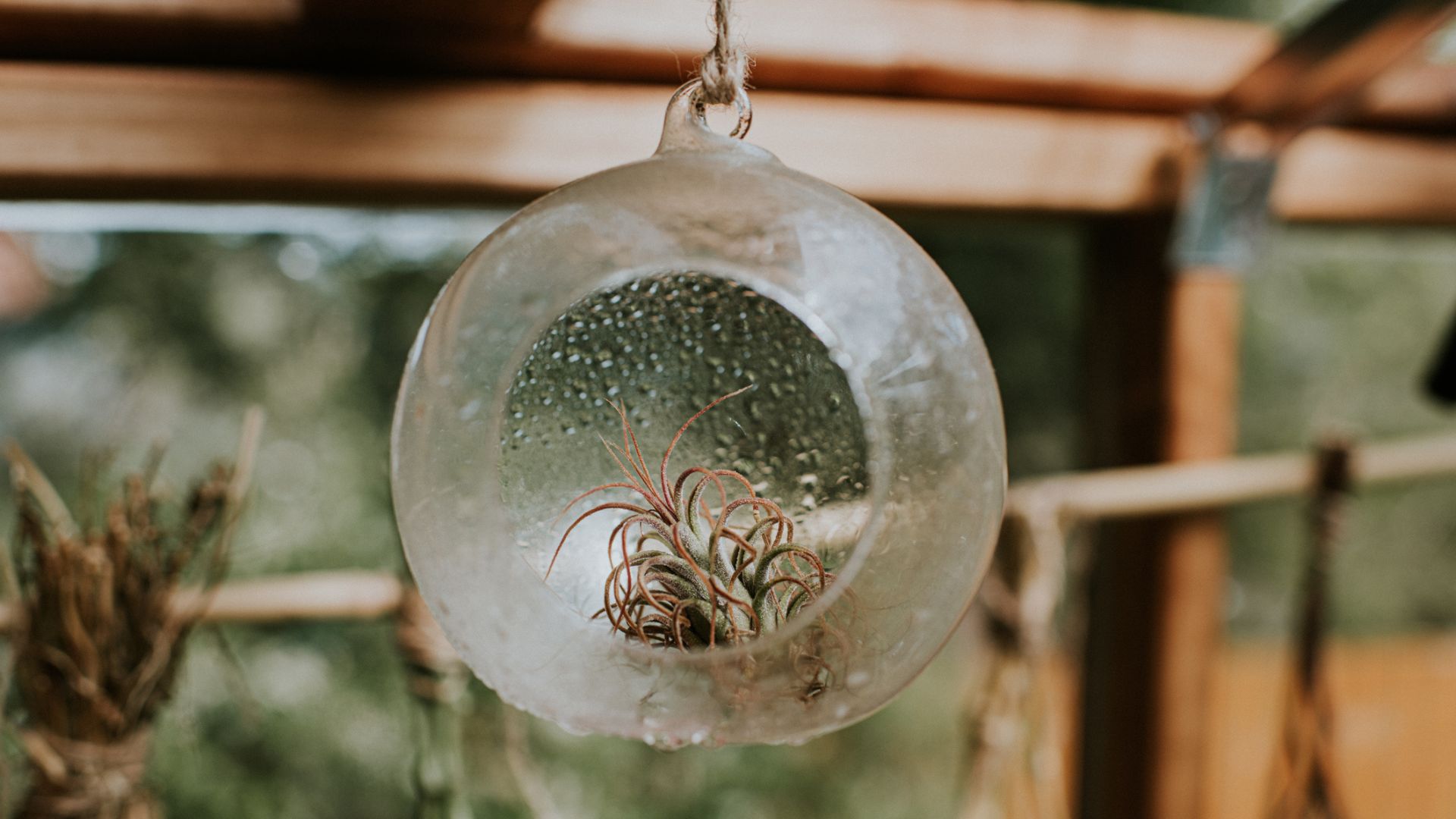
Love them or hate them, Air Plants (Tillandsia) are a bit of a marmite plant. For those who enjoy their alien-like appearance, air plants are perhaps one of the easiest to look after as they require no soil or water, just an occasional misting or soaking (dip and drain). Perfectly placed in a humid room like a kitchen or bathroom, Air Plants love high humidity. What's more, it'll soon let you know if it needs help, as crispy tips and curly leaves mean more water, please!
Keep it away from direct sunlight, and draughts and don't let them get cold.
Ponytail Palm

Just like the Yucca, the Ponytail Palm (Beaucarnea recurvata), which isn't actually a palm, stores water in its trunk, as they're native to arid environments which means they're more than happy to go long periods without watering. The plant gets its name from its long, thin, cascading, leaves that create a comely fountain-like shape or ponytail look. Although they love bright light, they will adapt to dimmer domains, making it a truly laid-back plant.
Oxalis

Going off green? Then mix things up with a vibrant splash of deep aubergine purple! Resembling a flutter of butterflies perched on stems, the Oxalis' (Oxalis triangularis) triangular leaves open and close with changes in the light, amplifying the majestic, fluttering effect. Also known as the "Purple Shamrock" the plant prefers indirect light and occasional watering. What's more, get everything right and in time you'll be rewarded with delicate white or pink flowers.
It will lose leaves, and appear to die back in the winter months, but have no fear, it's just saving its energy. Reduce your watering schedule and it's sure to resurrect come the spring.
Pilea
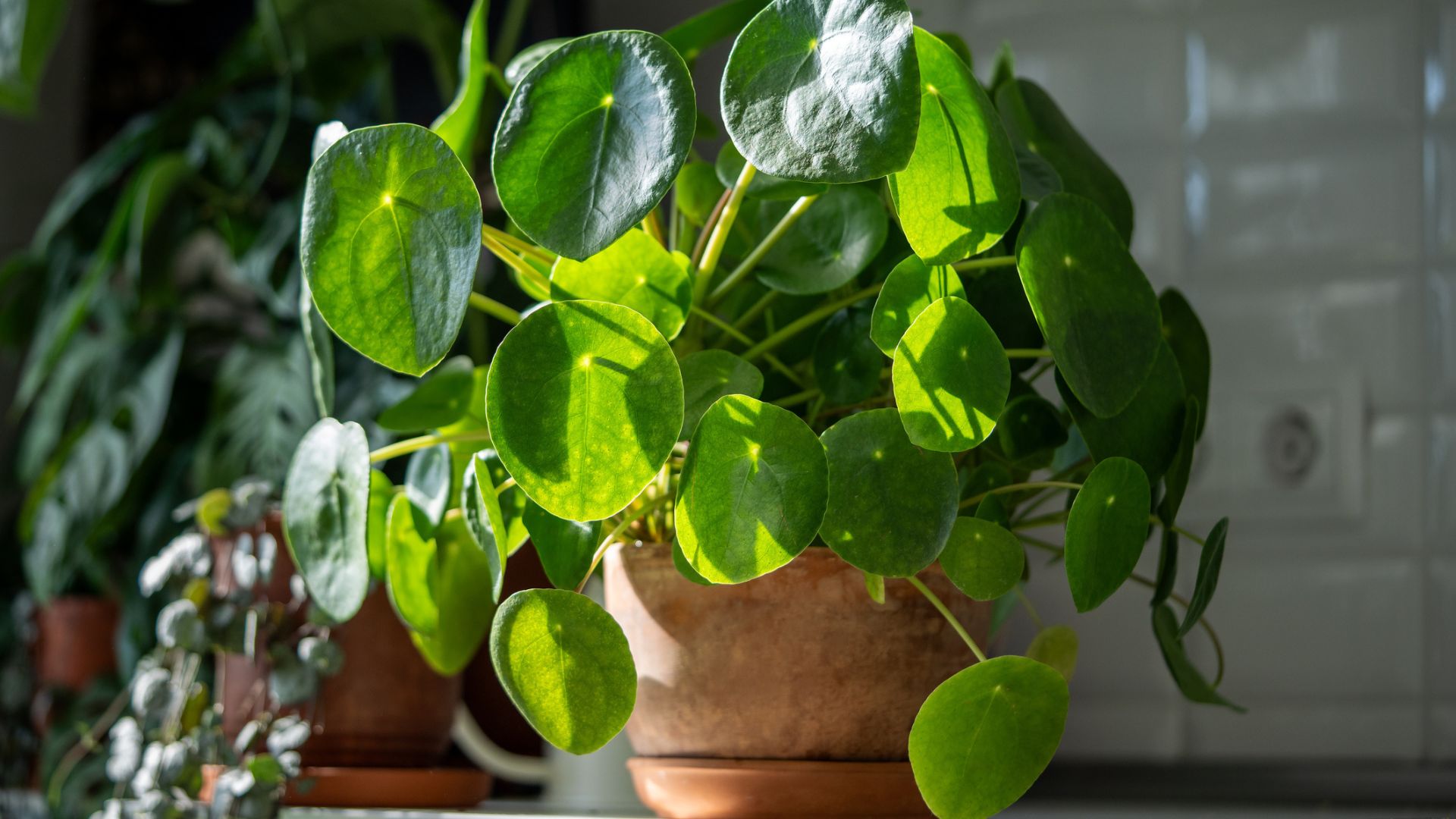
Producing a festival of coin-shaped leaves on long, lean steams is what gives the Pilea (Pilea peperomioides) its "Chinese Money Plant" nickname. Thriving in bright, indirect light and well-draining soil, the Pilea is as easy going as they come. What's more, with good care you'll soon notice little "pups" (baby plants) sprout up alongside the mother plant, which you can leave for a bushier display, or take out and repot for free plants. Don't panic if you find the odd yellow leaf at the base, it's probably just an older one, but if you find a few leaves are yellow at the same time this could be a sign that you're over or under watering the plant.
Monstera

A fan favourite of the 1970s, the Monstera became a symbol of the houseplant revival, solidifying its status as a timeless house plant icon. Often called the “Swiss Cheese Plant” for its large, striking leaves with unique fenestrations, the Monstera makes a bold statement, lending a lush, tropical feel and vibrant greenery to any home as it grows impressively large. Low-maintenance and adaptable to lower light conditions, this plant is also communicative about its care needs. If you notice water droplets on its leaves or yellowing foliage, it signals overwatering - simply allow the soil to dry out and consider reducing your watering schedule. Brown leaf tips on the other hand, could indicate it needs more humidity which you can solve with the occasional light misting, or is feeling a little chilly and needs protection from cold drafts.
Golden Barrel Cactus

The Golden Barrel Cactus (Echinocactus grusonii) is a striking, spherical cactus known for its bright yellow spines and ribbed, rounded form, often resembling a large, spiky ball. While it is slow-growing, it can eventually reach impressive sizes, adding architectural flair to any space. Despite its intimidating appearance, this sun-loving plant is incredibly resilient and requires minimal care. Thriving in bright light and well-draining soil, it is highly drought-tolerant, making it an excellent choice for busy, forgetful, or new plant owners.
Kalanchoe
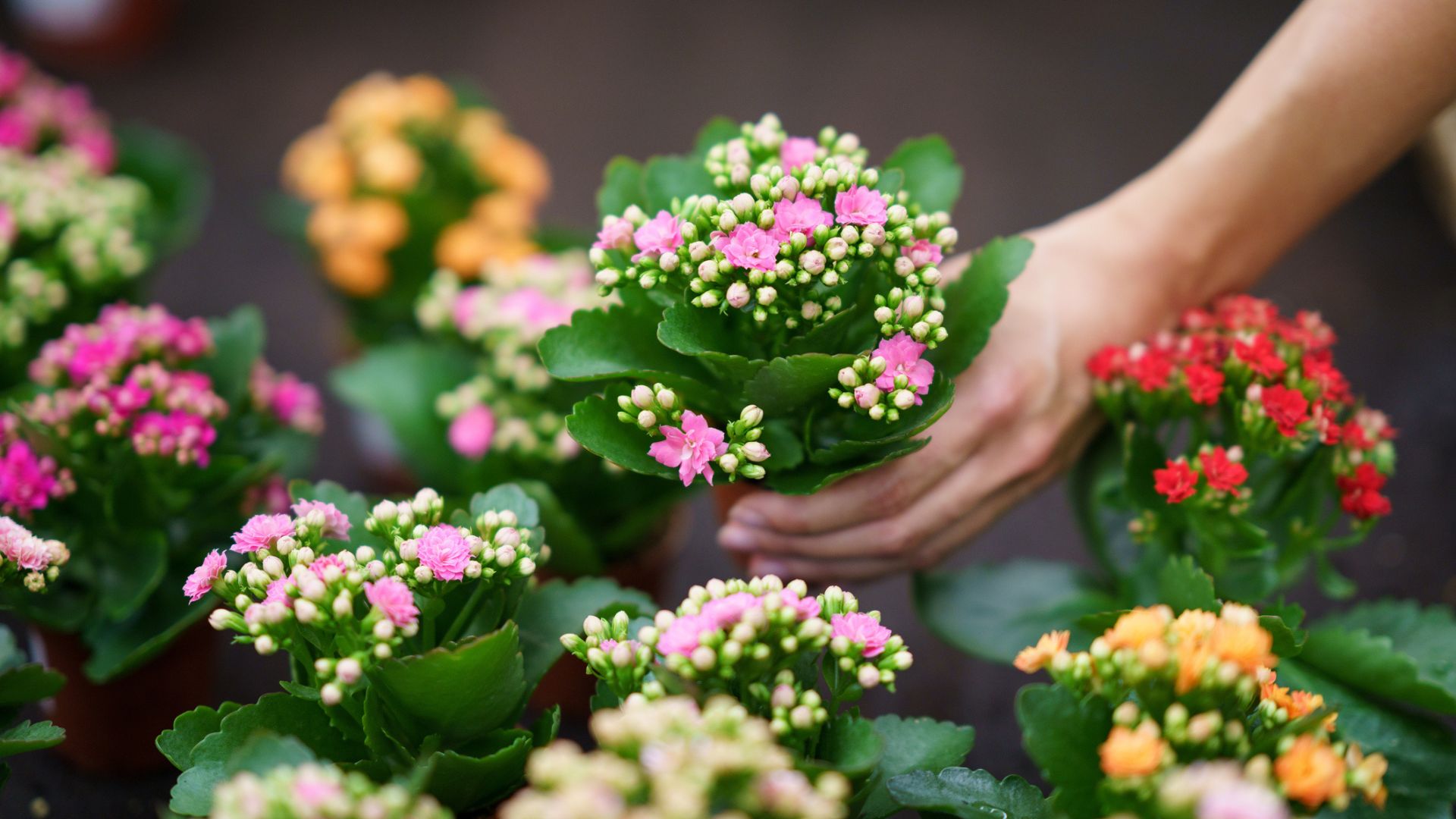
Found in most supermarkets all year round, the Kalanchoe (Kalanchoe blossfeldiana), or “Flaming Katy” as it’s also known, is relatively cheap, colourful and easy to care for, with bright clusters of flowers in a kaleidoscope of colours, namely, pinks, reds, oranges, yellows and whites. What most people don’t realise about the Kalanchoe is that it’s actually a hardy succulent, and as such does well with infrequent watering and tolerates a range of light conditions. While the flowers will fade after a few months you may be able to coax out more showings with the right care and conditions.
Peperomia obtusifolia
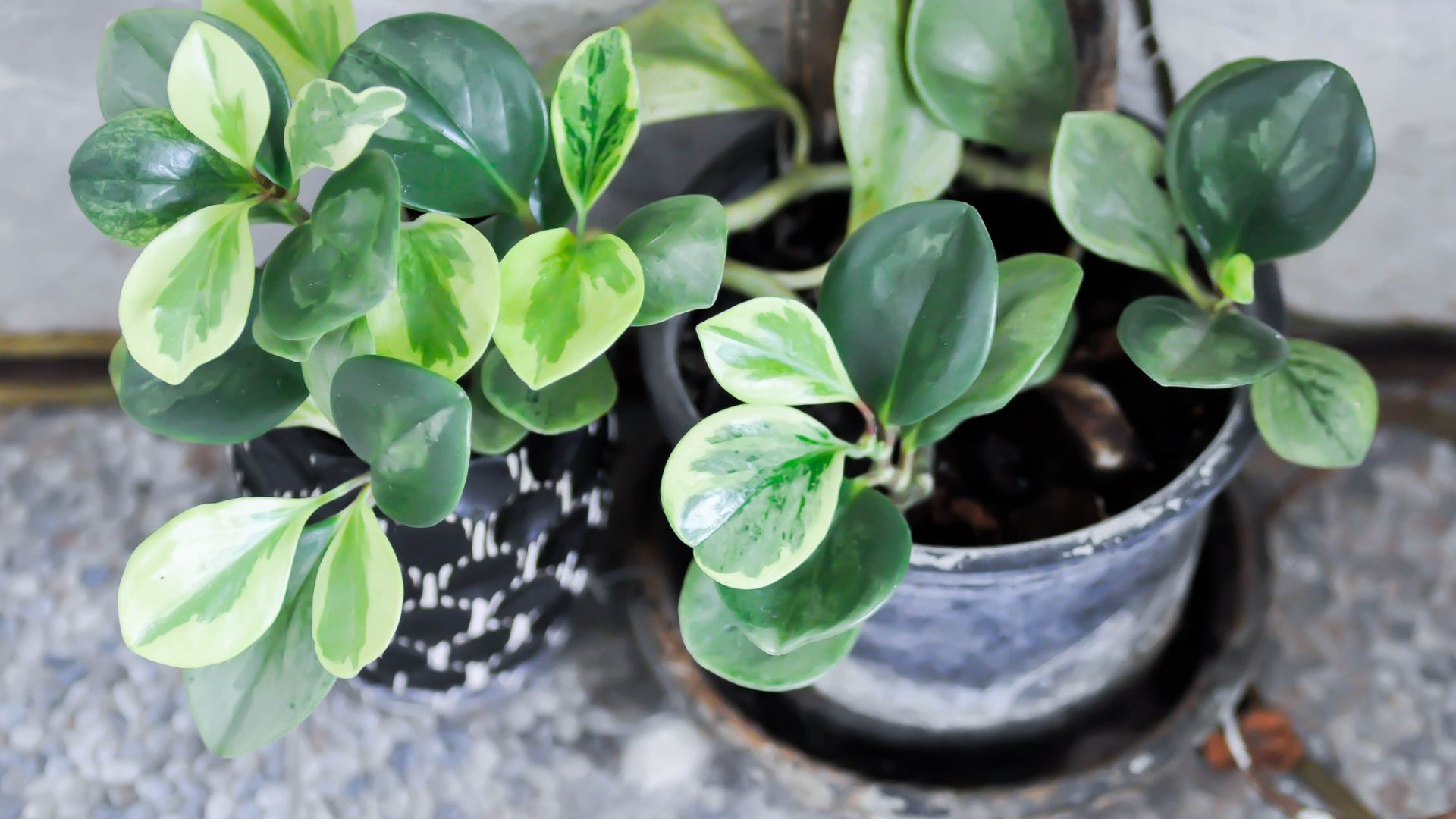
Peperomia obtusifolia, commonly known as “Pepperface” or the “Baby Rubber Plant”, (although is completely unrelated to its namesake), sports oval-shaped leaves boasting beautiful randomised areas of cream, yellow, or white, mixed with green, giving it a striking, and unique appearance. Widely considered to be the easiest Peperomia to care for and hardest to kill, it’s highly adaptable, thriving in a wide range of lighting conditions, from bright, indirect light to lower light, and thanks to its thick, fleshy leaves that store water, it is more drought-tolerant than many of its species.
Additionally, it adapts well to typical household humidity and temperature ranges, making it low-maintenance and less demanding about its environment than a lot of other plants.
Haworthia Fasciata

Haworthia Fasciata (Haworthiopsis fasciata), or “Zebra Plant” as it’s sometimes known (not to be confused with the Aphelandra squarrosa), is a notoriously low-maintenance compact succulent with thick, fleshy, spike-like green leaves often adorned with white stripes or dots. Like the Aloe Vera and Cacti, this plant loves bright, indirect light, but can tolerate some direct sun. Allow the soil to dry out between waterings, as Haworthia is drought-tolerant and prone to rot with overwatering.
During the growing season, and with the right conditions it may sprout a long, thin stalk (called an inflorescence) producing a succession of neat, tubular, white or pale pink flowers.
Parlor Palm

Parlor Palm (Chamaedorea elegans) - Native to the rainforest floors of Central America, the Parlour Palm (Chamaedorea elegans) with its gracefully arching fronds and slender stems, thrives in bright, indirect light but will cope with low light, making it ideal for most indoor spaces. It prefers well-draining soil which needs to be kept slightly moist, but don’t overwater it or it may fall foul of root rot. Humidity and moderate temperatures suit it best, though it can adapt to typical household conditions. If you’re keen to encourage lots of lush growth just offer it some liquid feed during the growing season.
Arrowhead Plant
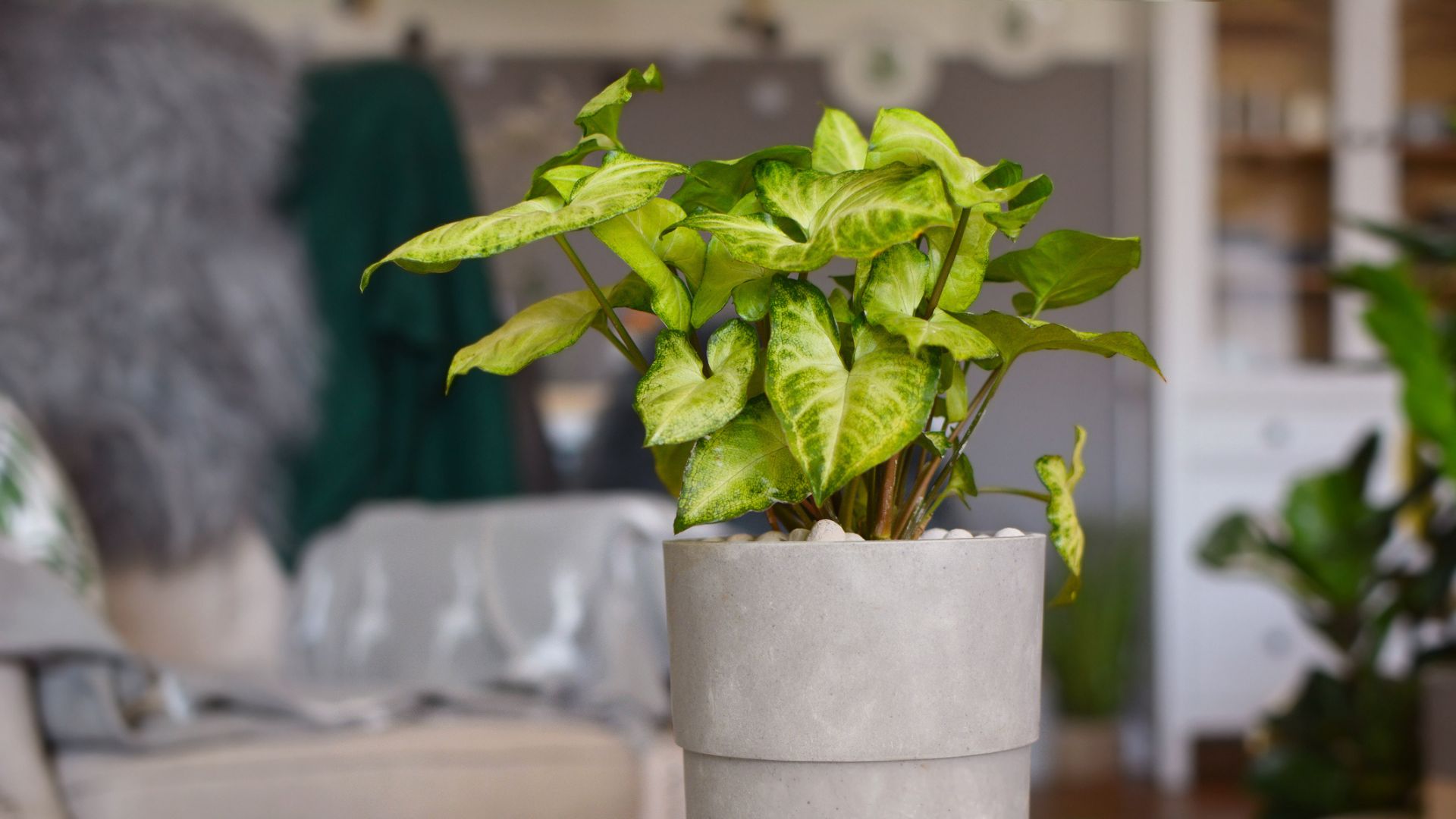
Famed for its pointed leaves that can mature into lobed form as the plant ages, the Arrowhead Plant (Syngonium podophyllum) adores bright, indirect light but will stand lower light levels if necessary. Preferring moist but well-draining soil, it should be watered when the top inch dries out, and although it really prefers higher humidity and warm temperatures, it can adapt to average household conditions. Due to its majestic trailing and climbing credentials, the Arrowhead Plant looks just fabulous in a hanging planter with its leaves swinging in the breeze, or encircling skywards up a moss pole. Alternatively, just give it a little prune now and then to maintain its bushy appearance.
Yucca

The Yucca (Yucca elephantipes), with its sharp, sword-like leaves and thick, trunk-like stems will add a nod to the exotic in any home, but while it’s strikingly attractive, it should also be kept away from small children. Otherwise it’s just like other easy-going plants; drought-tolerant and adores bright, indirect light or full sun if it can get it, and will joyfully adapt well to typical household temperatures and low humidity. The main enemy of the Yucca is overwatering, which can cause the roots to rot. Look out for peeling bark at the base and bendy leaves as an early indication of water overload.
Kentia palm

A firm favourite of the Victorian era, the Kentia palm (Howea forsteriana) was highly sought after by the elite to adorn their stately homes and conservatories. Its tropical yet elegant fronds added an exotic touch while adapting well to British indoor conditions, including lower light and cooler temperatures compared to its native Lord Howe Island in Australia.
While generally hardy, Kentia palms appreciate moderate humidity, so an occasional spritzing will do it the world of good.
Umbrella Tree

Prized for its glossy, umbrella-like leaf clusters, the appropriately named Umbrella Tree (Schefflera arboricola), native to Taiwan, adds a lush, tropical flair to any indoor space. While it’s not the fastest of growers, it can reach heights of up to 5ft, but you can keep it at your preferred height simply by snipping off the top.
Its recipe for survival is simple: bright, indirect light (but it can survive in lower light), refrain from watering until the top inch of soil feels dry, and keep it in warm temperatures if possible and mist regularly. You'll notice that it leans towards the light so turn the pot regularly or tie it carefully to a moss pole.
Corn Plant

Easy-going with a truly tropical aesthetic, what’s not to love about the Corn Plant (Dracaena fragrans)? This delectable dracaena features long, arching leaves reminiscent of corn stalks, with vivacious yellow or light green central stripes. Native to Africa, it thrives in bright, indirect light, ideally near a west or east facing window, but it won’t pout too much if placed in a shadowy corner. Only water when the top inch of soil feels dry to the touch, and you’ll see it really perk up with regularly wiped leaves and a light misting.
Natalie Denton is a freelance writer and editor with nearly 20 years of experience in both print and digital media. She’s written about everything from photography and travel, to health and lifestyle, with bylines in Psychologies, Women’s Health, and Cosmopolitan Hair & Beauty. She’s also contributed to countless best-selling bookazines, including Healthy Eating, The Complete Guide to Slow Living, and The Anti-Anxiety Handbook.
-
 All the lessons we've learned from Professor Tim Spector on optimising your health and wellbeing
All the lessons we've learned from Professor Tim Spector on optimising your health and wellbeingIf anyone's qualified to give us lessons on how to eat better, it's Professor Tim Spector - and these are his best lessons
By Grace Walsh Published
-
 How to charm your in-laws: the ultimate guide to keeping the peace
How to charm your in-laws: the ultimate guide to keeping the peaceDiscover how to strengthen your in-law relationships, one thoughtful gesture at a time
By Natalie Denton Published
